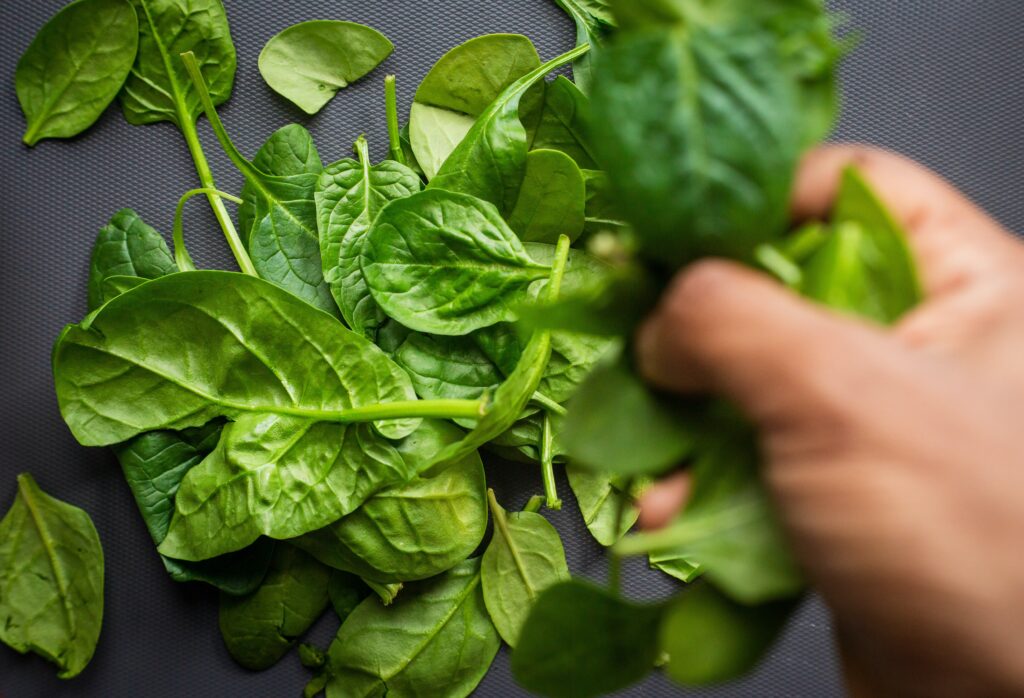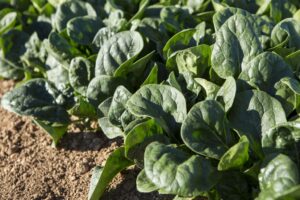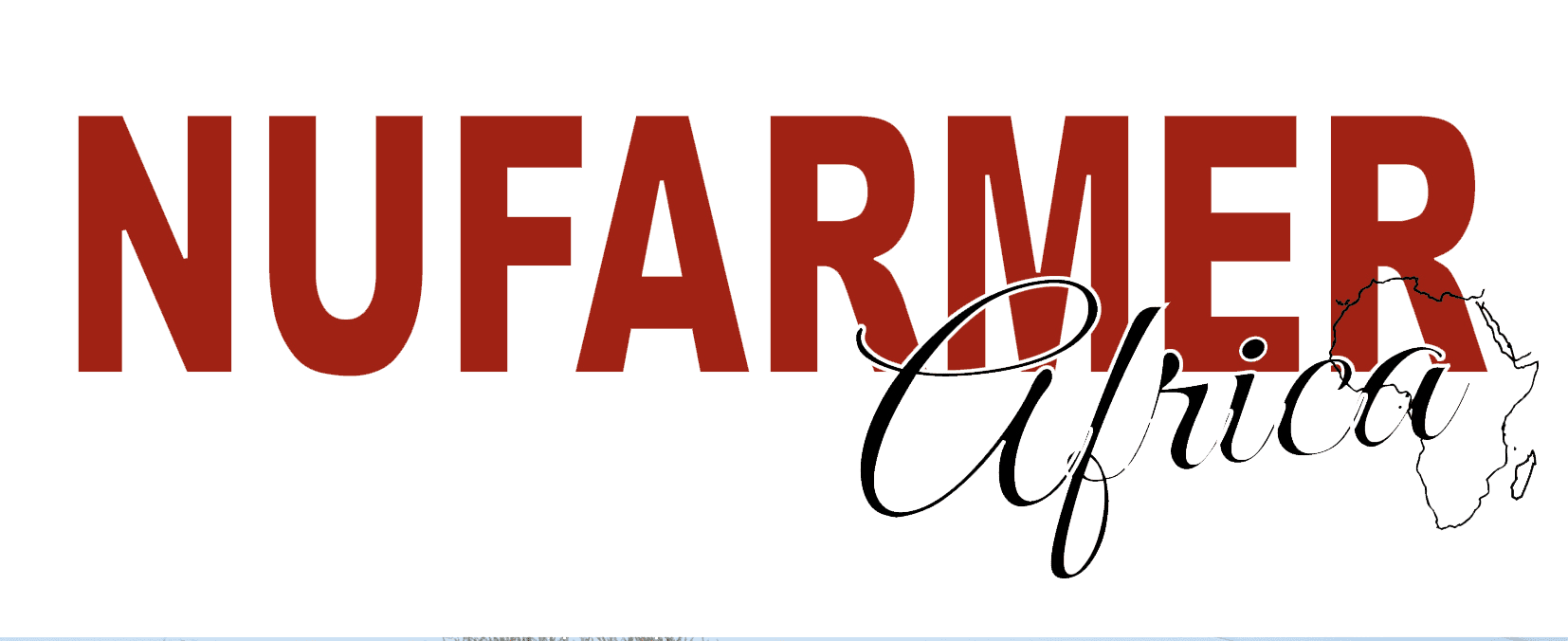Spinach: Everything is Eaten
Spinach, a crop that has been with us for centuries in one form or another. A crop high in iron, vitamin C carotenoids, folate and lutein. It may reduce oxidative stress, improve eye health and help prevent heart disease and some cancers.

Spinach is a wide term for two distinctive crop types. In South Africa, we refer to Swiss chard as spinach which is not entirely true. Whilst spinach or English spinach is a true spinach (often referred to as baby spinach). Spinach goes by the scientific name of Spinacia oleracea and Swiss Chard (which is actually a beet) by the name Beta vulgaris subsp. Vulgaris.
The Difference Between Spinach and Swiss Chard
Spinach has a flat round leaf with a thin tender stalk whilst Swiss chard has a long curly leaf with a thick almost celery like stalk. Currently both are commercially grown in South Africa. This delectable vegetable is seeing a growth in customer demand due to its health benefits, ease of use and low waste in cooking. Everything is eaten. Spinach suits the modern lifestyle of quick and easy, open the packet, cook it or make a salad. Swiss chard on the other hand is very popular with all income groups, is relatively cheap and is used in a variety of ways.
Swiss chard is an open field crop grown commercially, in home gardens and in feeding schemes or rural projects. Once planted it can be harvested numerous times and yields well. Commercial growers achieve 60t plus per ha. The crop is either sold in bunches to the municipal market and informal sector, and sold in bulk to processors and retailers. Two varieties Silverado and Fordhook Giant make up the bulk of the Swiss chard industry. Multi coloured Chards are also available. Wastage when processing or cooking is high, as the stem is removed due to its bitter flavor and texture.
Modern commercial production is a highly mechanized crop. If harvested as baby spinach, can yield between 6.5t to 22t a hectare. It is a crop that requires a high level of management in terms of weed control and moisture management. It is a quick crop sown directly into well prepared, well drained seed beds. From sowing to harvest in summer, depending on the region in the country and the cultivar used, it can be 22 to 29 days. In winter this is extended to 42 plus days. Correct cultivar selection is vital to ensure consistent yield and supply of the correct specifications for the market. Cultivar selection is based on speed of growth, fast growing in winter and slower in summer.
It can be susceptible to leaf disease with Downey mildew being the most important economical disease. This is caused by the oomeycete pathogen Peronospora effuse designated by the symbol Pe. There are 19 strains identified at present. Most modern varieties have resistance to some or all strains of the disease. When choosing a cultivar its best to communicate with the seed agent as to what strains are an issue in the particular area. Fusarium and Pythium are soil borne diseases that play a huge role in production of spinach, particularly where there is no crop rotation. Many growers fumigate to control this, which adds a huge cost. Some growers are following a biological approach. Others are looking at cultivar selection.

Rijk Zwaan has varieties that cover this. Sunangel RZ, Tarsier RZ, Platypus RZ, Boxfish RZ and Bonnethead RZ are varieties with Pythium resistance. Stoat RZ, Yakola RZ and Platypus RZ are strong on fusarium.
Rijk Zwaan – Bonnethead RZ
Both types have their market. If one is after the bulk cash crop then Swiss chard is the answer. If a grower has the capital, management skills, vision and the market spinach has high returns. There remains an opportunity for machine harvested industrial spinach in this country.

